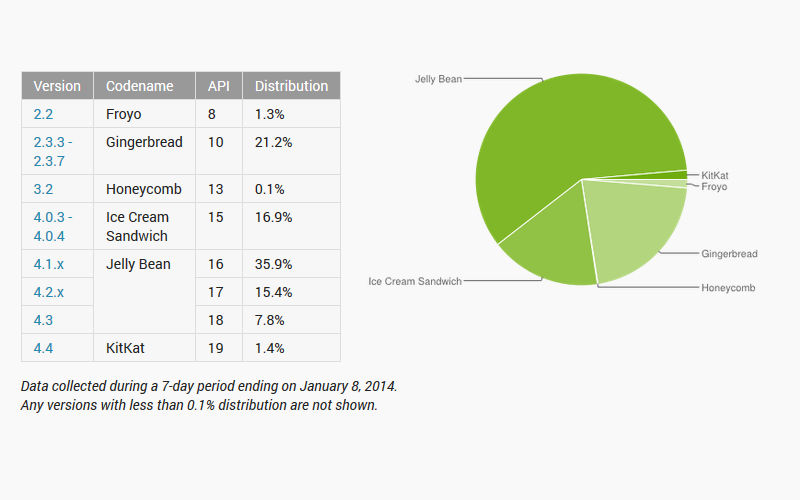Last month’s chart saw Android 4.4 KitKat’s first appearance on the company’s monthly distribution charts, which give an overview of which of the many versions of Google’s OS are being used the most. This month’s chart shows us that Android 4.4 KitKat is indeed growing, but not at the same speed as its predecessor.
KitKat’s virtual exclusivity to Google hardware can be attributed to its slow growth
Compared to last month, KitKat managed to climb just 0.3 percentage points. Its limitation to Google’s Nexus and Motorola phones can be attributed to its slow growth; third-party devices haven’t received KitKat upgrades or don’t ship with the OS on board from the get-go.
Meanwhile, Jelly Bean jumped from 54.5 percent to 59.1 percent, which at least means most devices are on modern software. It’s also not bad considering this version of the OS grew to half of all devices just a couple of months ago.
Despite its age, Gingerbread still holds on to 21.2 percent of devices, down from 24.1 percent last month, but still ahead of the much newer Ice Cream Sandwich, which also dropped from 18.6 percent last month to 16.9 percent. Even Froyo still far beats Honeycomb, with 1.3 percent and 0.1 percent, respectively.

